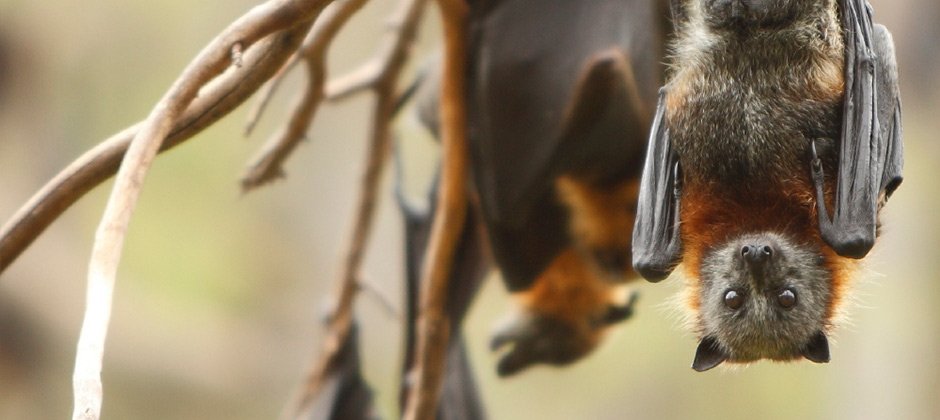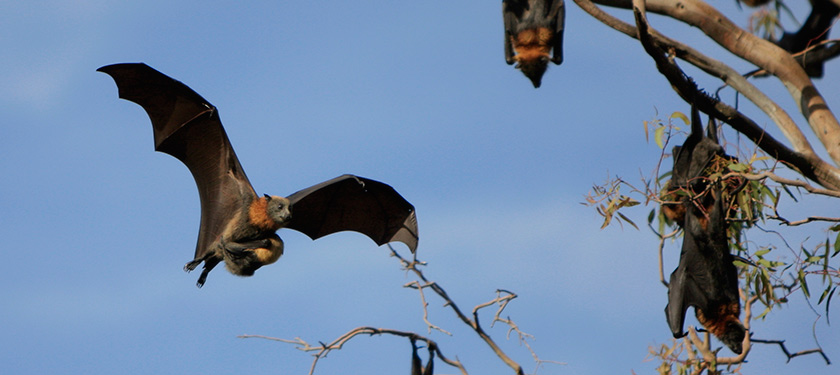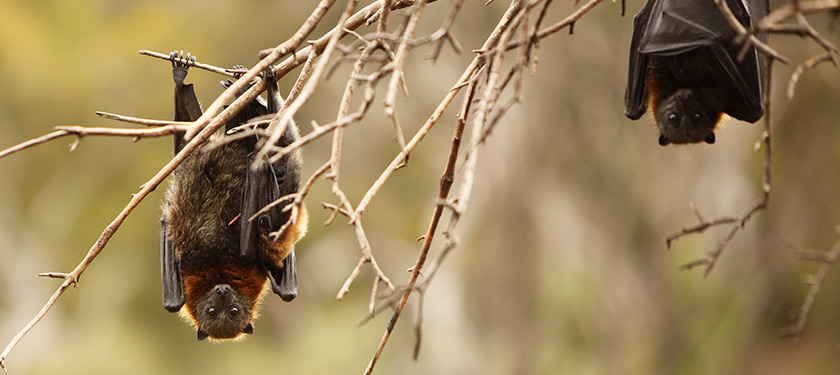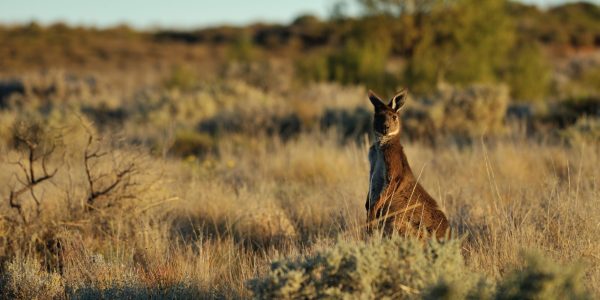Flying foxes live together in large colonies and fly out every night in search of food. Native flowering eucalypts are the natural food source of flying foxes, and these trees will be visited by bats foraging for nectar. Flying foxes are not just feeding during this time, but performing a crucial role of pollinating native forests and spreading seeds, ensuring the longevity of Australia’s forests.
As their natural habitat and food sources shrink, many flying fox roosts are becoming surrounded by urban areas and it is here that they encounter one of the biggest threats to their welfare and survival: backyard fruit tree netting. Backyard fruit trees can be a nourishing source of food for bats, but venturing into backyards is unfortunately proving deadly.
Unsafe netting entraps and kills thousands of flying foxes each year. Entangled flying foxes commonly suffer from heat exhaustion, exposure, and dehydration and many will die from their entanglement if not rescued. Wing membrane damage will affect almost all bats entangled in fruit tree netting, and can lead to a tragic outcome if they don’t heal adequately to support their return to the wild. When lactating females are caught in backyard fruit tree nets, their pups will consequently be killed too, as they are unable to return to the colony where their young are often left waiting for them.
Each year, volunteer wildlife rescuers respond to thousands of bat entanglements along the East coast of Australia. This endless stream of rescues and rehabilitation work is a huge and unnecessary burden on wildlife volunteers, and on the national population of flying foxes, some of them already threatened species. For those who aren’t so lucky to be rescued, they may be trapped in netting and injured for days. Bones can be broken, delicate membranes damaged, and mouths torn in their desperate efforts to escape. They are frequently found dead.
The good news is that legislation is slowly shifting in the right direction, and in the meantime, you can help end this preventable cruelty starting today…
Choosing safer netting
Victoria and the Australian Capital Territory have made the use of unsafe netting illegal – and there is hope that Queensland, New South Wales, and South Australia, will soon follow with this compassionate decision (more on this below!).
The kindest option for wildlife is to share trees and fruit with them – after all, this is their homeland too. However, if netting must be used, wildlife-safe netting is available, and many large netting and hardware retailers are already selling it including Fruitsaver, Fruit-sock, Hailguard and Coolaroo.









